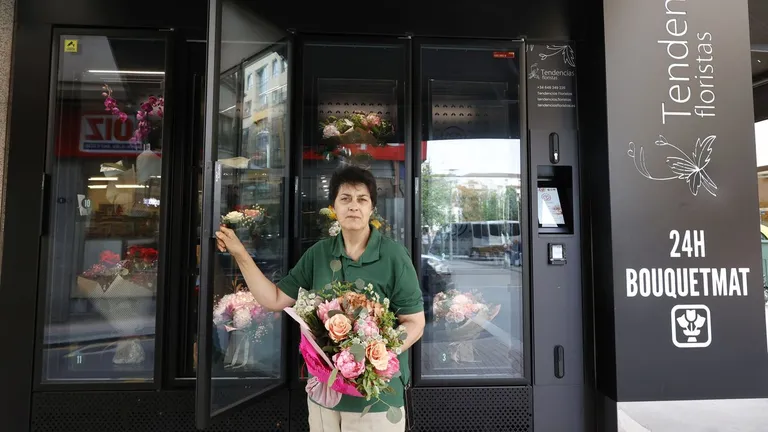How a Flower Wholesaler Can Support the Growth of Its Clients
The role of a flower wholesaler today goes far beyond supplying products.
A wholesaler that aims to build long-term relationships and customer loyalty must become a growth partner, not just a supplier.
This means supporting florists in what truly determines their success:
their ability to sell and reach customers.
1. Supporting Sales, Not Just Deliveries
When a florist sells more, they buy more.
The strongest model of loyalty is created when the wholesaler strengthens the florist’s sales potential, instead of competing solely on price.
A wholesaler can do this by:
- helping open additional points of sale (for example, via BouquetMat),
- providing guidance on pricing, assortment, and visual merchandising,
- offering marketing training and promotional materials to support florist visibility.
2. Increasing Revenue Through 24/7 Availability
A florist operating only during business hours is limited to a narrow purchasing window.
Introducing 24/7 flower sales increases turnover, reduces the impact of seasonality, and allows customers to buy flowers whenever the need arises.
This leads directly to:
- higher revenue for the florist,
- more frequent orders from the wholesaler,
- an overall expansion of the local flower market.
3. Building an Advantage Over Retail Chains
Large retail chains have price leverage, but they cannot offer personal connection, service quality, and emotional value, which are central to the floral business.
A wholesaler that supports local florists strengthens what truly differentiates them:
- personal style,
- local identity,
- emotional relationship with customers.
This is a strategy of winning through closeness, service quality, and availability—not volume.
We Can Create a Loyalty Program Where Everyone Wins
We design loyalty programs not based on discounts, but on real business development support for florists.
In such a program:
- The florist receives tools to increase revenue (such as an additional 24/7 point of sale).
- The wholesaler gains loyal, stable customers who grow together with them, without price pressure.
- The end customer gets more convenient access to fresh, locally arranged bouquets.
- The entire flower industry grows in a sustainable and balanced way, driven by local business owners rather than chain expansion.
This is a model where every side benefits:
- there is no competition between partners,
- the market grows because it is strengthened collectively.
Conclusion
The floral industry is one of the few sectors where relationships, quality, and local identity mean more than scale.
For this reason, the future of the market will not belong to the cheapest suppliers nor the largest retail chains, but to those who know how to strengthen their partners in a real and lasting way.
A wholesaler who helps florists increase their sales, rather than simply “buy at a lower price,” builds a loyalty that no discount can replace.
A florist who grows and expands their sales naturally deepens cooperation with those who support that growth.
This is the essence of shared value creation:
- The florist gains stability and room for expansion,
- The wholesaler builds long-term relationships and a lasting competitive advantage,
- The customer gains easier access to high-quality, locally arranged flowers,
- The entire floral industry strengthens itself by remaining in the hands of local entrepreneurs.
In a world that often rewards fast results, we choose a path built on maturity, partnership, and responsibility.
Because the floral market is not just about flowers.
It is about people, emotions, and the places that bring meaning to daily life.
It is a community.
And a community grows when every part of it grows together.






